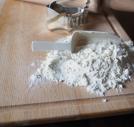Diabetes and the Exercise Effect
You have your sugar levels under good control, your diet is healthful, and you decide that this is the time to add some exercise to your daily schedule.
You spend an hour at the gym working out and test your sugar when you're done. Why is it so high?
You have experienced the 'Exercise Effect' on blood sugar levels.
How Exercise Affects Blood Sugar Levels
Blood sugar levels change throughout the day for all of us. We may wake up with low sugar, which is eased by a healthy breakfast containing fiber and protein. After lunch our sugar levels might rise a bit, and by late evening we usually have our highest readings of the day. This pattern of blood sugar increase is common to the diabetic, the pre-diabetic and the non-diabetic alike, although the levels are generally highest for the diabetic.
These changing levels are responsive to the demands we place on ourselves each day. If we remember that our bodies utilize glucose to create energy, that pattern makes sense. The more active we are through the day, the greater the demands for glucose.
For the person with diabetes, there is impairment of either the release of insulin by the pancreas or the acceptance of insulin by the cells, or both. Because of this, the amount of insulin circulating in the bloodstream is insufficient to cause the cells to accept all of the glucose the body produces.
When we exercise, the body demands even more glucose than usual for its exercising muscles. The liver responds to this increased demand and releases glucose. Without receiving any additional insulin, the glucose is not processed into the body's cells, and the level of glucose rises within the bloodstream.
According to the American Diabetes Association (ADA) this effect occurs most often in those who have already had some damage to blood vessels throughout the body.
How to Exercise Safely with Diabetes
Exercise is an important component in controlling diabetes. It is necessary to maintain good health and ward off many of the comorbidities of diabetes. It also improves insulin sensitivity so that cells are better able to accept available glucose.
Despite the effect detailed above, exercise can be safely accomplished, with the following caveats.
First, consult your doctor before beginning an exercise program. If you are over age 35, you might need a stress test before starting.
Start slowly. It is important to learn how your body is going to react to exercise before jumping into an aggressive program. Starting slowly allows your body to get used to exercise and allows you to measure the results by checking your blood sugar before, during and after exercise.
If your blood sugar is above 240 mg/dl, check your urine for ketones. If ketones are present, do not exercise. Also, if blood glucose is above 400 mg/dl, do not exercise.
Be sure to drink plenty of fluids as you work out.
Sources: Joslin Diabetes Center and American Diabetes Association
Photo credit: Dr. Abdullah Naser on Flickr


































